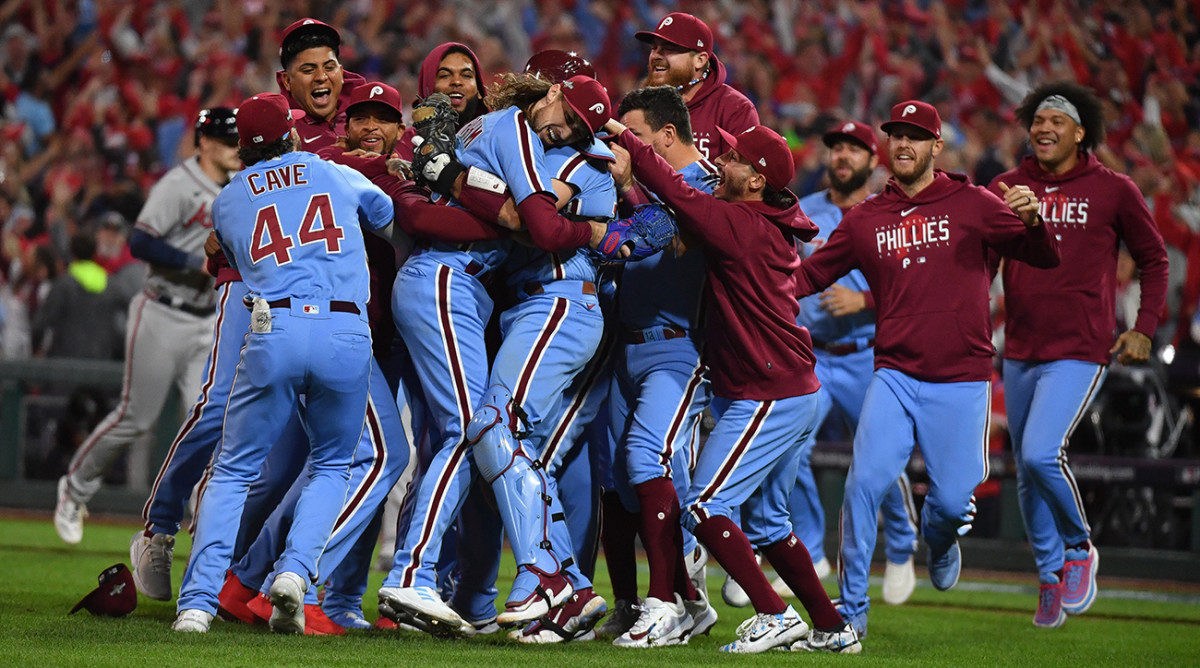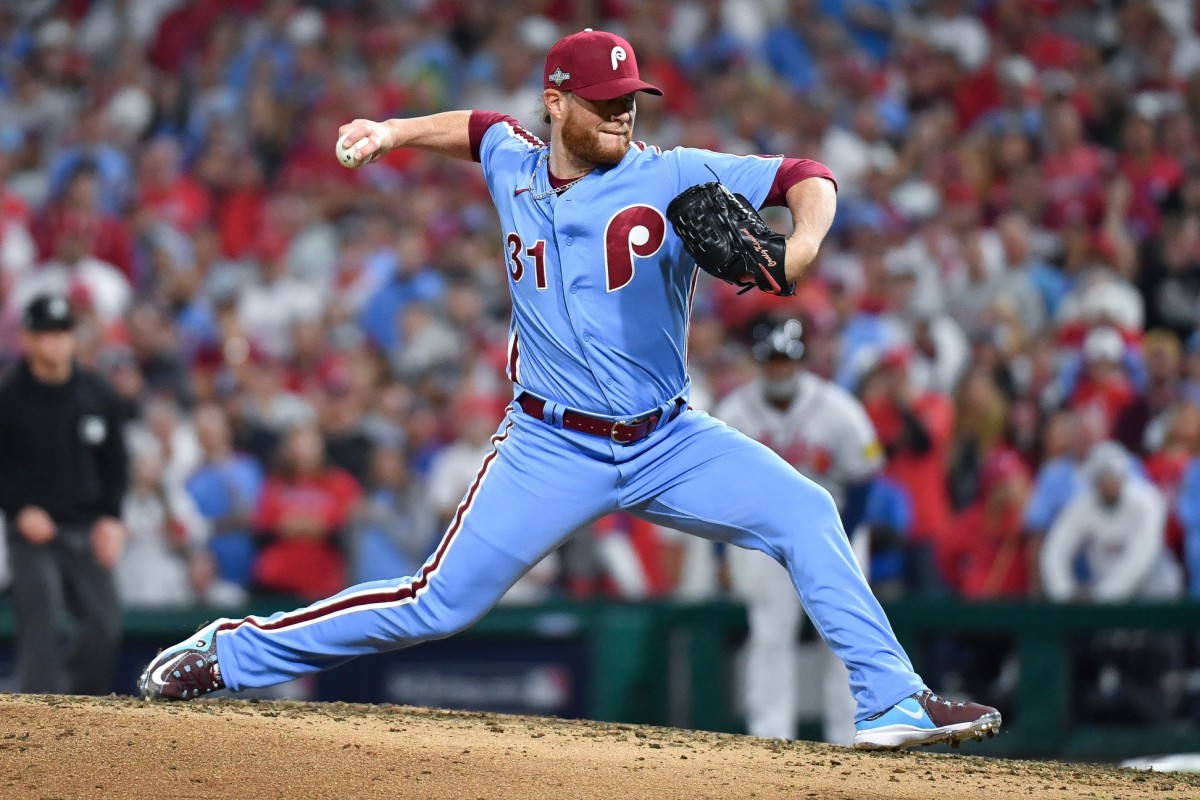Phillies Send Braves Packing—Again—by Stifling Offense

There was an instant, as the ball soared off the bat of Ronald Acuña Jr. toward center field, when the 45,831 fans at Citizens Bank Park fell silent. The Phillies led by two in the top of the seventh with two outs and the bases loaded, seven outs from the National League Championship Series, and the whole thing seemed to hang in the balance as the ball hung in the air. Then the crowd roared to life as it dropped, as so many Atlanta attempts have this series, into a Phillie’s glove.
“If you want to score on me playing center field,” said center fielder Johan Rojas later, in the delirious aftermath of Philadelphia’s 3–1 series-clinching victory, “you’re going to have to hit a homer.”
It was a memorable line from a series stuffed with them, most notably Atlanta shortstop Orlando Arcia’s clubhouse taunt of Phillies first baseman Bryce Harper after Game 2, an Atlanta win, ended with Harper doubled off first base. “Attaboy, Harper,” he yelled afterward. The Phillies and their fans enjoyed using his words as a rallying cry, from the crowd’s chants of “Attaboy” when Arcia made an out to the “Attaboy Harper” T-shirt Phillies reliever Orion Kerkering donned during the postgame celebration.

But Atlanta, which led the league with 104 wins, is not going home after Game 4 of the National League Division Series for the second straight year because Arcia made fun of Harper. Atlanta lost because the most explosive offense in the history of the sport scored eight runs in four games.
It’s hard to choose the most representative number.
- The team that hit the most regular-season home runs in history (307, or nearly two per game) hit three in four games.
- Atlanta slugged .504 this season. Acuña, who will almost certainly win the NL Most Valuable Player Award in November, had an OPS this series of .508.
- Matt Olson, the major league home run leader, did not have an extra-base hit.
Even after it was over, Atlanta’s hitters were baffled about what had just happened to them.
“I don’t know,” Olson said. “If we had a better answer, we might not be in this position.”
Acuña declined to speak with reporters after the game.
Their manager had no more explanation. “The Phillies stifled us,” said Brian Snitker.
Philadelphia’s answer was simple: “Let our really good pitchers do what they do,” said pitching coach Caleb Cotham. The Phillies focus on their pitchers’ strengths rather than hitters’ weaknesses, he explained. They emphasize pitch selection over pitch location, telling their pitchers that their stuff is good enough to challenge hitters even over the heart of the strike zone.
The most fitting example of that policy came in the top of the seventh Thursday, when manager Rob Thomson summoned closer Craig Kimbrel early to extinguish a fire: up two, two on, two out. Kimbrel walked backup catcher Travis d’Arnaud, pinch-hitting in the ninth spot, to bring up Acuña.
Acuña had not hit well, but he was still Atlanta’s most dangerous hitter. Kimbrel had been struggling with his mechanics, yanking his fastball, because his posture was not quite right. Cotham and catcher J.T. Realmuto trotted out to the mound to discuss their plan of attack: fastballs inside. “You have to be very diligent of getting it inside,” Realmuto said afterward, “because he hammers it out over [the plate]. It’s the scariest place, because if you do it too much, he’s gonna look for it, but with our velo, we’re able to do that a little more often. And you have to have to really take care of breaking balls with him, because he hits breaking balls better than most hitters in baseball. So it’s just a game of cat and mouse, slowing him down just enough to try to get him with fastballs in.”
On the mound, Cotham told Kimbrel to stop thinking about his delivery. “It’s you and J.T. and Acuña,” he said. “Go be you.” Realmuto added, “Trust it. Your stuff is too good. You got this guy.”
“I got him,” Kimbrel replied.

The first pitch was a fastball outside for a ball, but Kimbrel settled in after that. He threw a fastball at the bottom of the zone, which Acuña took for a strike, and a knuckle curve down and in for a swinging strike. Acuña fouled off another low fastball—perhaps a bit more over the plate than Kimbrel had wanted—and watched a knuckle curve outside for ball two. He fouled off an inside fastball.
Then Kimbrel threw almost the same pitch again. “It was in just enough,” said Realmuto. Rojas snared it. The ballpark erupted. It was one of Atlanta’s best struck balls of the series. It was an out.
